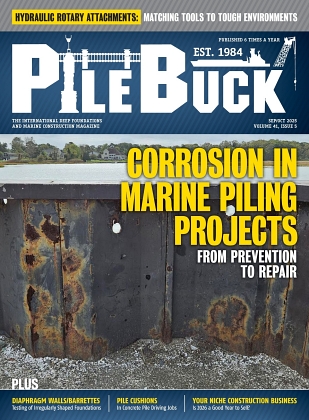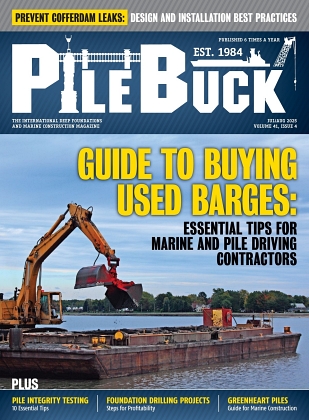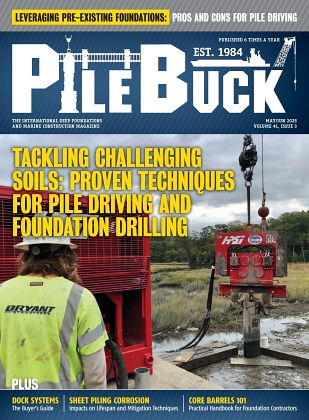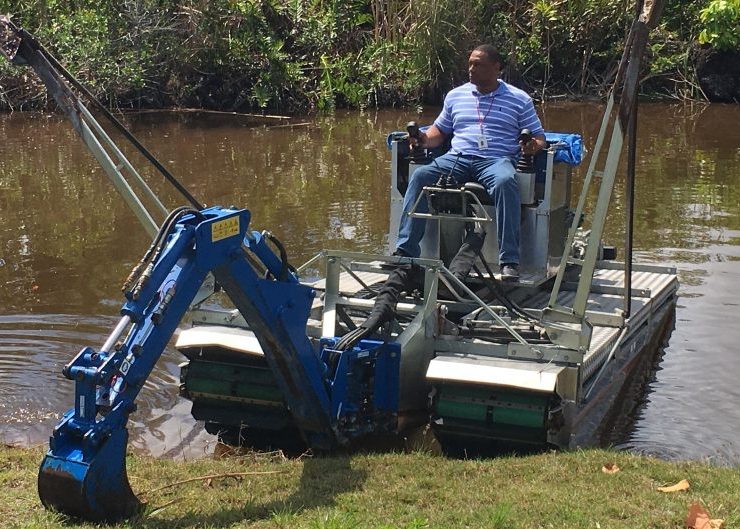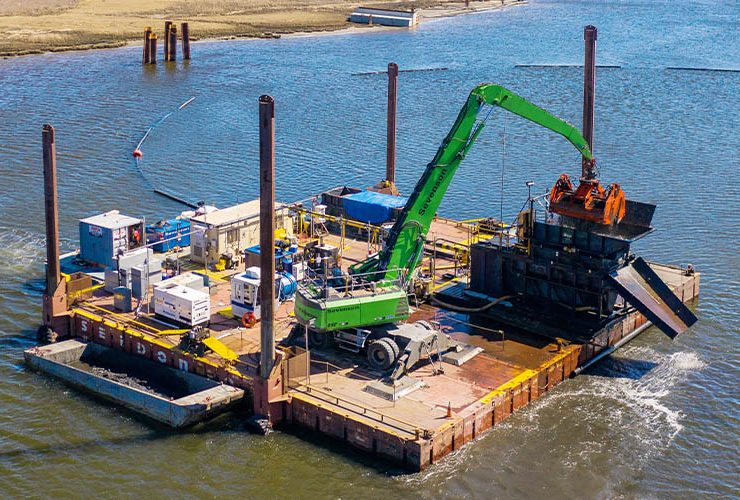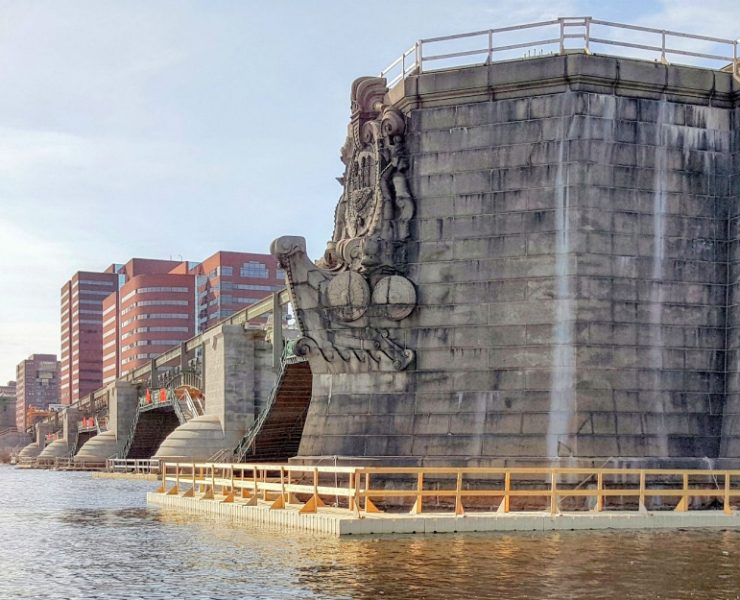Mastering Crane Operations in Marine Construction: Selection, Maintenance, Safety, and More
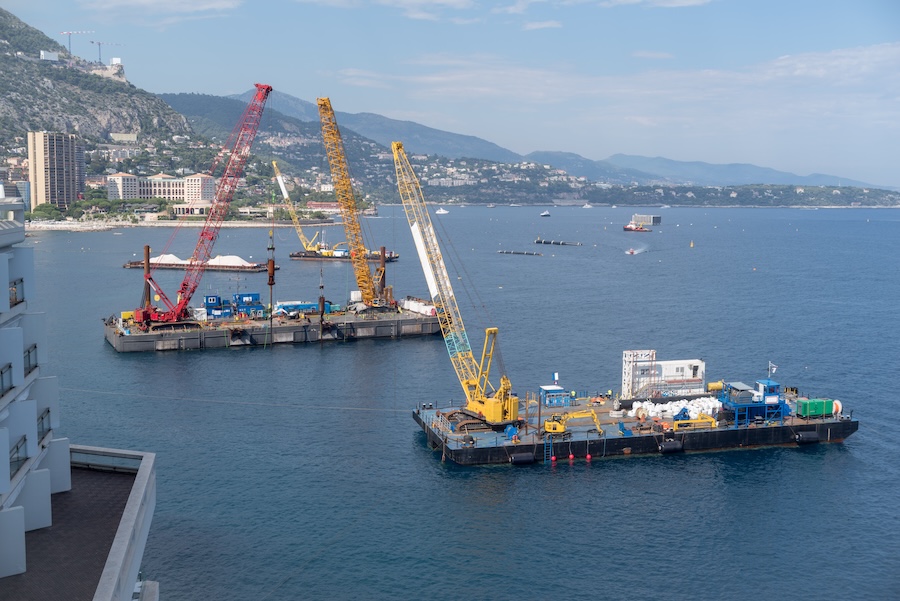

View the complete article here.
Intended for marine contractors, engineers, and project managers—this guide addresses the types of cranes, safety regulations, best practices for crane operation, and maintenance requirements. With a focus on innovation and sustainability, it highlights how advanced crane technology can improve efficiency and reduce environmental impact. Whether you’re overseeing the construction of an offshore oil platform or expanding a harbor, this guide offers the insights needed to ensure safe and successful crane operations in marine environments.
Types of Cranes Used in Marine Construction
The are a variety of cranes that are utilized in marine construction applications on a regular basis, including—but not limited to—floating cranes, crawler cranes, and hydraulic cranes.
Floating Cranes
Floating cranes, also known as crane barges, are cranes mounted on floating platforms. These are used in marine construction where heavy lifting is required on water, often for tasks that involve placing or removing large structures.
Floating cranes are essential in marine construction tasks such as dredging, bridge construction, offshore oil platform assembly, and lifting heavy materials at sea. They can also assist in installing large subsea structures or performing salvage operations.
The primary advantage of floating cranes is their mobility—they can move across large water bodies to service different areas of a project. They offer excellent lifting capacities in challenging marine environments. However, their limitations include stability issues in rough seas—and their performance can be hindered by adverse weather conditions such as high winds or large waves.
Barge-Mounted Cranes
Barge-mounted cranes are similar to floating cranes but are often used for more localized tasks such as lifting piles, constructing piers, and installing coastal defenses. These cranes are mounted on barges that can be moved to specific work areas, often with the assistance of tugboats.
Barge-mounted cranes require careful attention to balance and stability, especially when lifting heavy loads in open water. Anchoring systems or spuds (hydraulically operated legs) are used to stabilize the barge during operations, reducing the risk of tipping. Ensuring proper weight distribution is crucial to prevent accidents during lifting.
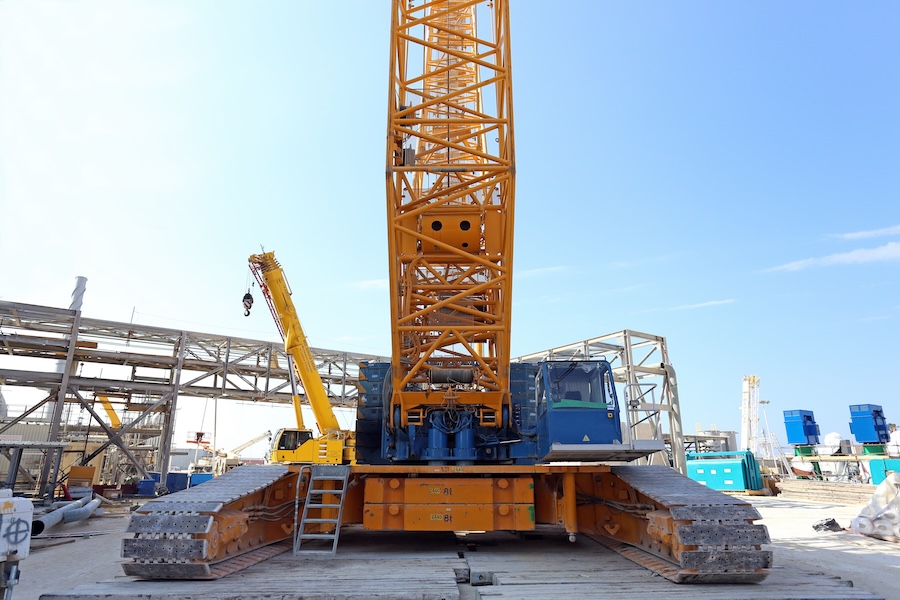
Crawler Cranes
Crawler cranes are mobile cranes equipped with tracks instead of wheels, which allows them to move over uneven or soft terrain. These cranes are frequently used in both onshore and nearshore marine construction for jobs like lifting heavy piles, assembling large components, and bridge building.
The tracks of crawler cranes provide stability and allow the crane to maneuver over soft ground, muddy areas, and rough terrain commonly found at construction sites near water bodies. This makes them particularly useful for projects in which the terrain changes or is unstable.
Hydraulic Cranes
Hydraulic cranes use fluid power to lift and move heavy loads with precision—making them ideal for tasks in marine environments where delicate, controlled movements are necessary. Their strength and precision are used in jobs requiring accurate placement of structures or equipment.
These cranes are highly flexible and can be adapted for use onshore or on barges. Hydraulic cranes perform well in confined spaces or areas where movement needs to be restricted due to environmental conditions, making them a versatile choice in various marine construction tasks.
Tower Cranes
Tower cranes are often employed in large-scale marine construction projects such as building bridges, ports, and offshore structures. They offer significant lifting capacities and can reach great heights, making them well-suited for high-altitude operations where the assembly of tall structures is required.
One of the key advantages of tower cranes is their height and stability. Anchored securely to firm ground or built-up structures, they can lift heavy materials to elevated positions while remaining stable even in windy or unpredictable weather conditions.
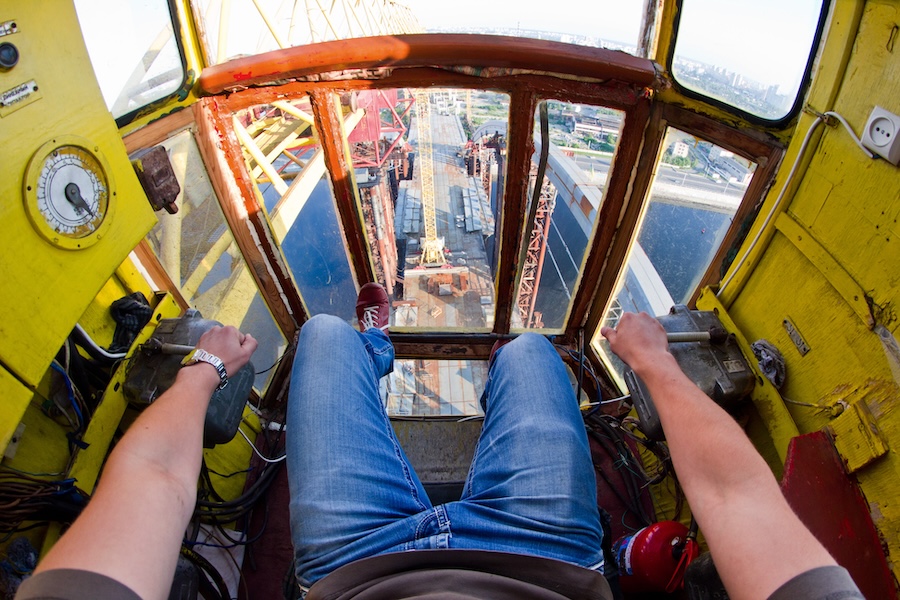
Telescopic Cranes
Telescopic cranes are known for their adjustable boom, which can extend and retract as needed. This makes them highly useful in confined or hard-to-reach areas in marine construction, such as between bridge pylons or near completed structures where space is limited.
These cranes are frequently used in the maintenance and repair of marine structures, docks, and offshore platforms. Their ability to extend and retract makes them ideal for accessing areas that require precision and limited space for maneuvering.
Overhead Gantry Cranes
Overhead gantry cranes are large cranes that run on rails, typically used in ports and harbors to load and unload cargo from ships. These cranes are essential in material handling and can lift heavy containers or bulk goods efficiently.
The high lifting capacity of gantry cranes makes them indispensable for cargo operations. They can be used for stacking and organizing materials on docks or for the precise placement of heavy items during construction. Their efficient movement along fixed tracks provides a stable and reliable lifting solution in port environments.
Choosing the Right Crane for Marine Projects
Selecting the appropriate crane for marine construction projects is crucial for ensuring safety, efficiency, and successful project completion.
Factors to Consider
While choosing a crane, the following factors should be considered…
Load Capacity and Reach
One of the most important considerations when choosing a crane for marine projects is the load capacity (the maximum weight the crane can safely lift) and its reach (the distance the boom can extend). Marine construction often involves lifting heavy materials, such as large steel piles or prefabricated bridge sections, so ensuring the crane can handle the required weight is essential. Additionally, the reach of the crane must be sufficient to cover the project’s working area—especially when operating from a barge or a fixed position where movement is limited.
Terrain and Water Depth Considerations
Whether it is a shallow coastal area or deep offshore waters—the terrain of the seabed, as well as the water depth, will influence the type of crane that can be used. For example, in shallow waters with soft or uneven terrain, a crawler crane with tracks may be the best choice—as it can traverse difficult surfaces. In deep waters, floating or barge-mounted cranes may be necessary to operate safely and effectively—as they can work from the water surface rather than being land-based.
Mobility vs. Stability in Offshore Environments
Floating cranes and barge-mounted cranes offer excellent mobility, allowing operators to move the crane to different locations within the project site. However, stability is crucial to prevent accidents—especially in open waters where waves and tides can affect crane operations. Stabilization systems such as spuds, anchors, or dynamic positioning technology are often used to keep cranes steady during lifts—ensuring both safety and precision.
Environmental Factors (Wind, Wave, Tide)
Wind speed, wave height, and tidal movements can all affect the safety and effectiveness of crane operations. Wind can reduce the crane’s lifting capacity or create instability, while high waves can cause barge-mounted cranes to move unpredictably. Tidal changes can also impact water depth, which affects the positioning and stability of cranes working nearshore. Cranes used in marine environments must be capable of withstanding these forces, and operators should be trained to adjust their operations based on real-time weather and tidal data.
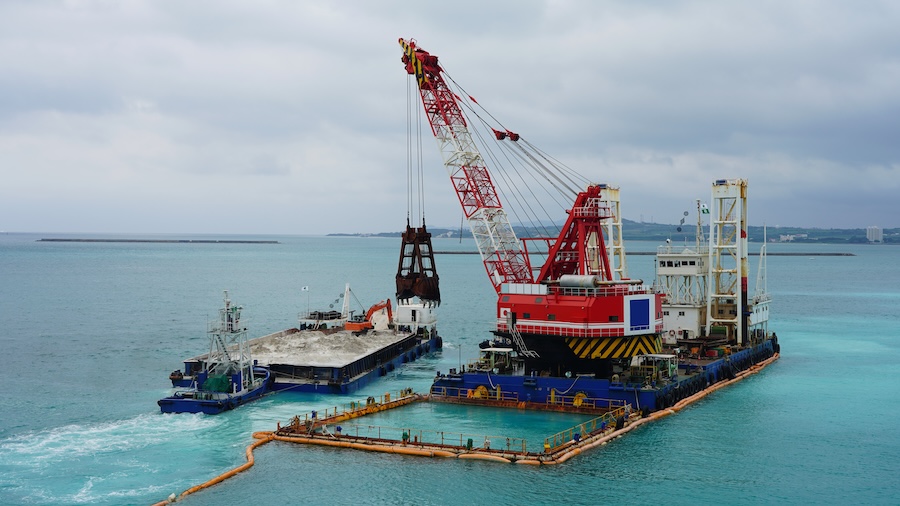
Specialized Crane Attachments
Specialized crane attachments, including pile drivers and dredging buckets, can enhance the efficiency and versatility of marine crane operations.
Customizing Cranes for Specific Tasks (Pile Drivers, Dredging Buckets)
It’s often necessary to equip cranes with specialized attachments to handle specific tasks in marine construction. Common attachments include:
- Pile drivers: For projects that require driving piles into the seabed, such as bridge construction or dock building, cranes can be outfitted with pile-driving attachments. These attachments allow the crane to lift and guide piles into place before driving them to the required depth.
- Dredging buckets: Dredging is a common activity in marine construction, especially for deepening harbors or creating foundations for offshore structures. Cranes can be fitted with dredging buckets to excavate sediment from the seabed, lifting the material onto barges for removal.
Other attachments—such as clamshell buckets, grabs, and augers—can be used for lifting, excavating, and handling materials in various marine construction scenarios. Customizing the crane with the appropriate attachment ensures that it can perform its specific role efficiently—whether it’s lifting, driving, or digging.
Best Practices and Maintenance Considerations
Marine environments pose unique challenges to crane operation due to factors like water movement, saltwater corrosion, and the need for precise communication between teams.
Best Practices for Safe Crane Operation
Best practices include securing the crane on floating platforms, load balancing, communication, and more.
Securing the Crane on Floating Platforms
When cranes are mounted on floating platforms, such as barges, ensuring the crane is securely stabilized is critical. Proper anchoring or the use of spuds (hydraulic legs that can be lowered to the seafloor) is essential to prevent the platform from shifting during lifting operations. Additionally, cranes must be placed centrally on the barge to maintain balance—and careful attention should be paid to weight distribution to avoid tipping or capsizing, especially in rough seas or during heavy lifts.
Crane Rigging and Load Balancing
Rigging is the process of attaching the load to the crane’s hook using cables, slings, or chains. In marine environments, the rigging must be done with extra care to account for movement caused by water. Loads should be evenly distributed and securely fastened to avoid shifting during lifting or transport. Load balancing is equally critical—ensuring the load’s center of gravity aligns with the crane’s lifting point will minimize the risk of tipping or load instability during operation.
Communication Between Crane Operators and Marine Crew
Effective communication between crane operators and the marine crew is vital to ensure safe and efficient operations. Hand signals, radio communication, or other signaling devices are commonly used to coordinate crane movements with the crew on the barge or at the construction site. In marine settings, where environmental factors like wind and waves can cause sudden movements, real-time communication helps prevent accidents and ensures that everyone is aware of the crane’s position and movements.
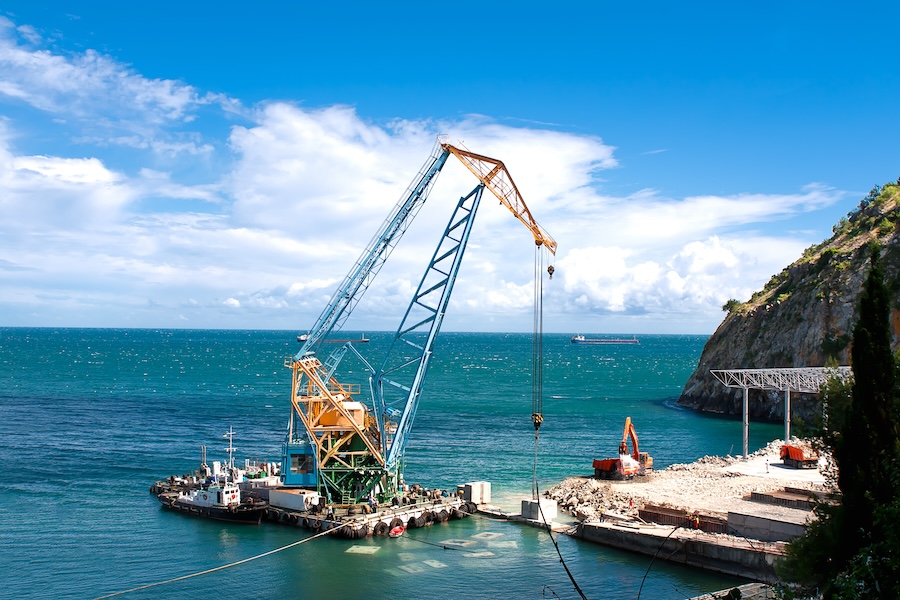
Maintenance Considerations
Maintenance considerations, such as regular inspections and part replacements, are just two examples of the essential practices required for proper crane operation.
Corrosion Prevention in Saltwater Environments
Saltwater is highly corrosive and can quickly degrade crane components if proper preventative measures are not taken. Regular cleaning and the application of anti-corrosion coatings are necessary to protect metal parts from rust and saltwater damage. Particular attention should be paid to exposed surfaces—such as the crane’s boom, cables, and hydraulic systems. Using corrosion-resistant materials and parts can also prolong the crane’s lifespan in marine environments.
Regular Inspections and Part Replacements
Routine inspections are essential for identifying wear-and-tear, especially in harsh marine conditions. Cranes used in marine construction should undergo frequent checks to detect any signs of mechanical fatigue, corrosion, or damage to the rigging system. Critical components like hoist cables, hooks, and pulleys should be inspected daily to ensure safe operation.
Importance of Hydraulic System Upkeep
Hydraulic systems are a key component in most marine cranes, providing the power and precision needed for lifting and maneuvering heavy loads. Saltwater exposure can compromise hydraulic seals, hoses, and fittings—leading to leaks or system failures. Routine checks of the hydraulic system are crucial to detect any potential issues early. Regular fluid changes and ensuring the system is properly sealed and protected from saltwater infiltration will help maintain optimal performance.
Regulations and Safety Standards
Operating cranes in marine construction requires strict adherence to various safety regulations and environmental laws to ensure both the safety of workers and the protection of marine ecosystems.
Marine-Specific Crane Safety Regulations
Marine crane safety regulations, established by national and international organizations, ensure efficient and safe operations in water-based environments.
OSHA and International Safety Standards for Marine Cranes
The Occupational Safety and Health Administration (OSHA) establishes regulations specific to crane use in marine construction within the United States. These guidelines cover crane stability, load limits, and operation protocols in water environments. Internationally, standards set by organizations such as the International Labour Organization (ILO) and the International Maritime Organization (IMO) also provide frameworks to ensure crane safety in offshore and nearshore construction projects.
These regulations mandate strict safety measures—including the proper inspection of cranes, load rigging procedures, and operational limits under adverse weather conditions like high winds or strong currents. Compliance with these standards ensures that crane operations are safe and accidents are minimized.
Certification Requirements for Crane Operators in Marine Environments
To operate a crane in a marine environment, crane operators must hold specific certifications that demonstrate their competence in managing cranes in challenging water-based settings. In the U.S., certifications such as those provided by the National Commission for the Certification of Crane Operators (NCCCO) are often required. Operators working on international projects may need additional certifications depending on the location and governing bodies. These certifications ensure that crane operators understand the unique demands of marine construction, such as handling cranes on barges or floating platforms, and are trained in safety protocols to manage environmental risks.
Environmental Impact Regulations
Adhering to environmental regulations is essential not only for legal compliance but also for maintaining sustainable marine construction practices that minimize long-term environmental impacts.
Minimizing Damage to Marine Ecosystems During Crane Operations
Marine construction, including crane operations, has the potential to disrupt sensitive ecosystems. Regulations are in place to minimize damage to marine habitats—including coral reefs, fish populations, and other underwater ecosystems. Best practices, such as limiting dredging activities and reducing sediment displacement during construction, are required to protect these environments. Operators are often required to perform environmental impact assessments (EIA) before projects begin, ensuring that their activities pose minimal harm to the surrounding waters.
Compliance with Local and International Environmental Laws
Environmental laws vary depending on the location of the construction project, and compliance with both local and international laws is necessary. For example, projects within U.S. waters must comply with the Clean Water Act (CWA) and the Marine Mammal Protection Act (MMPA), which regulate activities that could affect water quality or harm marine life. Internationally, construction must adhere to guidelines set by organizations such as the United Nations Environment Programme (UNEP) and other regional conventions that protect the marine environment.
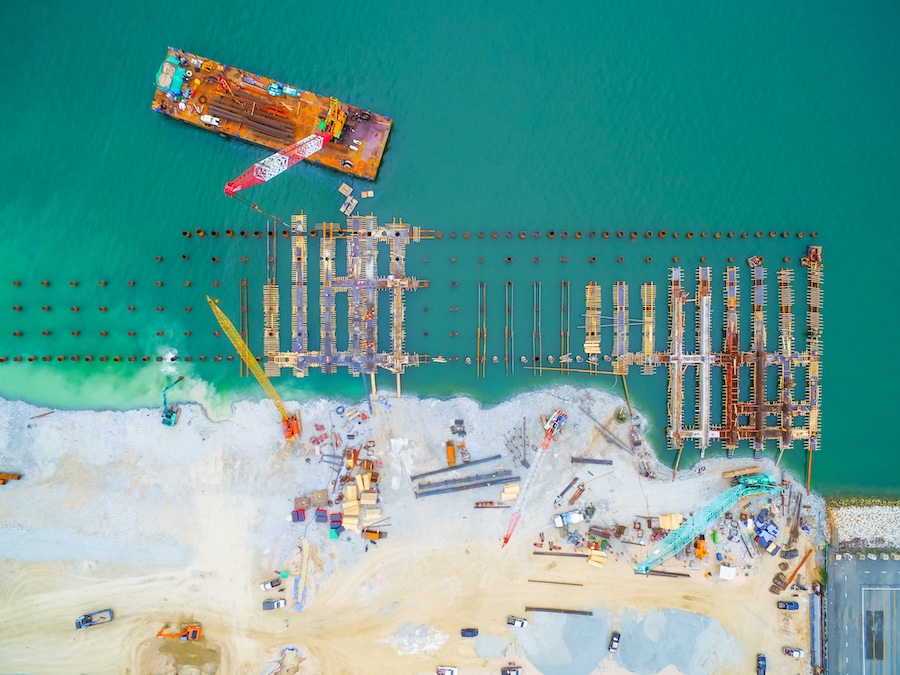
Final Thoughts
Choosing the right crane for marine construction projects is essential for ensuring safety, efficiency, and project success. The selection process should consider factors such as load capacity, terrain, mobility, and environmental conditions. Equally important are the safety protocols that must be followed to protect both workers and the surrounding marine ecosystem. Innovation in crane technology, such as remote operation and eco-friendly models, continues to enhance the capabilities of cranes—making them more efficient and sustainable.
View the complete article here.
What are the most commonly used cranes in marine construction?
Floating cranes, crawler cranes, hydraulic cranes, tower cranes, telescopic cranes, and overhead gantry cranes are commonly used based on the project's needs
How can crane operations minimize environmental impact in marine construction?
By adhering to environmental regulations, conducting impact assessments, and implementing best practices like reducing sediment displacement and protecting marine habitats.

